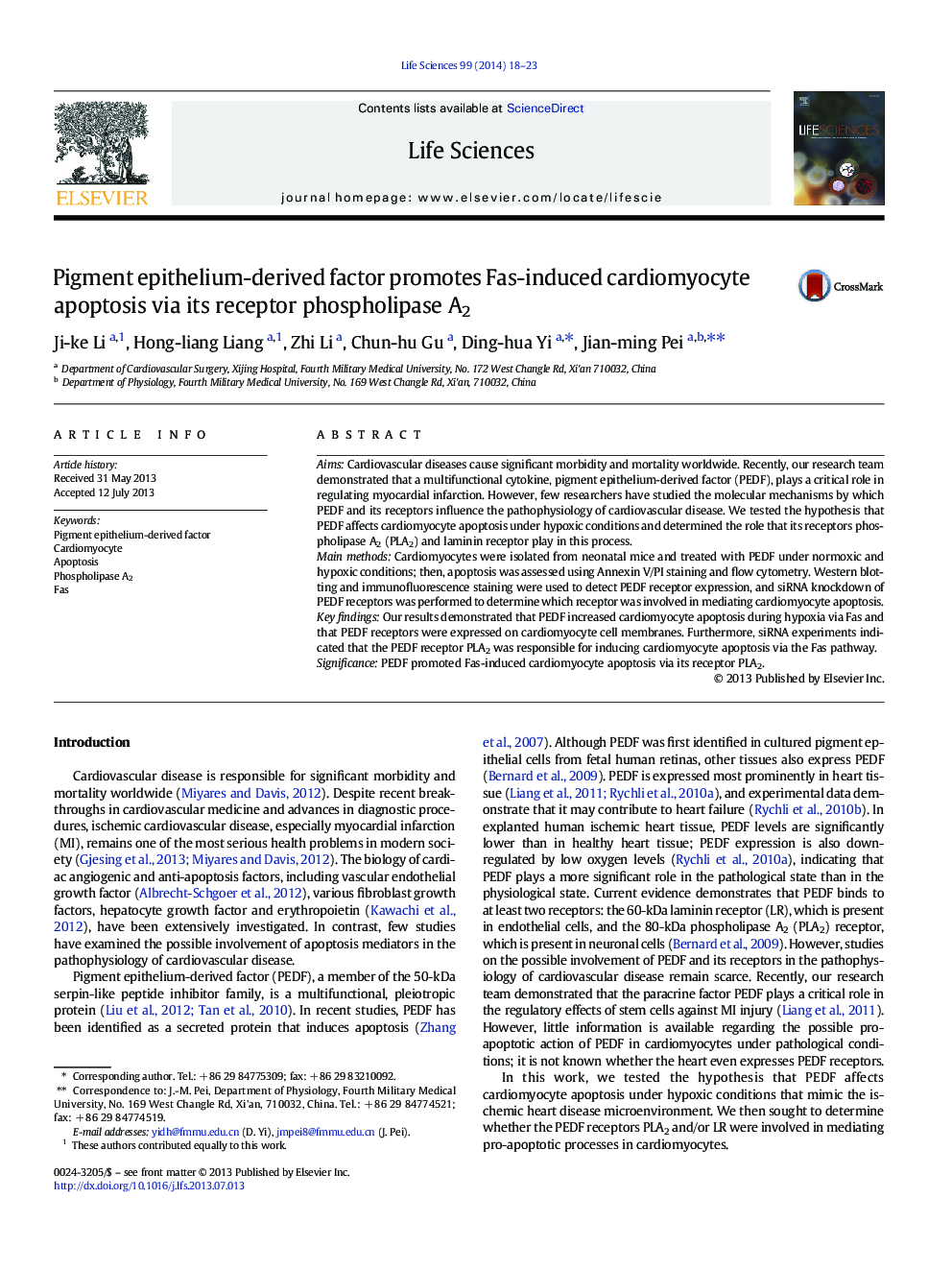| Article ID | Journal | Published Year | Pages | File Type |
|---|---|---|---|---|
| 2551302 | Life Sciences | 2014 | 6 Pages |
AimsCardiovascular diseases cause significant morbidity and mortality worldwide. Recently, our research team demonstrated that a multifunctional cytokine, pigment epithelium-derived factor (PEDF), plays a critical role in regulating myocardial infarction. However, few researchers have studied the molecular mechanisms by which PEDF and its receptors influence the pathophysiology of cardiovascular disease. We tested the hypothesis that PEDF affects cardiomyocyte apoptosis under hypoxic conditions and determined the role that its receptors phospholipase A2 (PLA2) and laminin receptor play in this process.Main methodsCardiomyocytes were isolated from neonatal mice and treated with PEDF under normoxic and hypoxic conditions; then, apoptosis was assessed using Annexin V/PI staining and flow cytometry. Western blotting and immunofluorescence staining were used to detect PEDF receptor expression, and siRNA knockdown of PEDF receptors was performed to determine which receptor was involved in mediating cardiomyocyte apoptosis.Key findingsOur results demonstrated that PEDF increased cardiomyocyte apoptosis during hypoxia via Fas and that PEDF receptors were expressed on cardiomyocyte cell membranes. Furthermore, siRNA experiments indicated that the PEDF receptor PLA2 was responsible for inducing cardiomyocyte apoptosis via the Fas pathway.SignificancePEDF promoted Fas-induced cardiomyocyte apoptosis via its receptor PLA2.
